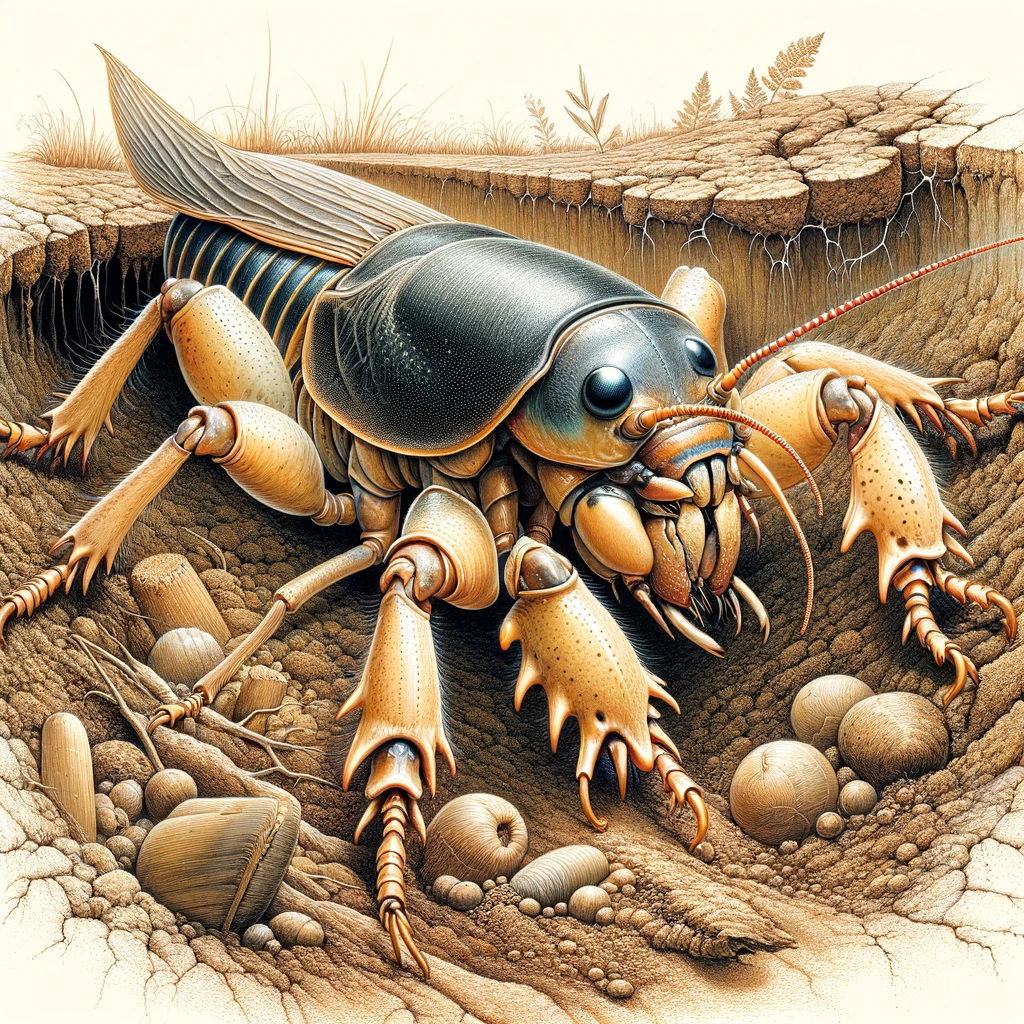
The Enigmatic World of Mole Crickets
Mole crickets, those subterranean architects of the insect world, lead a life shrouded in dirt and mystery. With their powerful forelegs shaped like shovels, these insects carve out an existence beneath our feet, unseen yet impactful. This article dives into 15 intriguing facts about these extraordinary creatures, shedding light on their lives beneath the surface.
1. Master Burrowers
Mole crickets are exceptional diggers. Their forelegs are adapted for burrowing, allowing them to navigate through the soil with ease. This not only makes them elusive to predators but also efficient at finding food and creating habitats.
2. A Global Presence
Though often associated with specific regions, mole crickets have a worldwide distribution. They are found on every continent except Antarctica, adapting to a variety of climates and ecosystems.
3. Unique Communication
The chirping of mole crickets is not just noise but a complex means of communication. They use specially designed tunnels to amplify their calls, which attract mates and ward off rivals.
4. Diverse Diet
Their diet is as versatile as their habitat. Mole crickets feed on roots, leaves, and small invertebrates, making them both herbivores and predators. This diverse diet supports their survival in numerous environments.
5. Water Engineers
Some species can swim and even construct underwater tunnels. These aquatic abilities allow them to escape predators and explore moist environments for food and shelter.
6. Lifecycle and Reproduction
The lifecycle of a mole cricket begins with the female laying eggs in a burrow. These eggs hatch into nymphs, which undergo several molts before reaching adulthood. The cycle is both fascinating and vital for their survival.
7. Natural Pest Controllers
In some ecosystems, mole crickets play a crucial role in controlling pest populations. By preying on harmful insects, they contribute to the balance of their habitats.
8. Agricultural Impact
However, in agricultural settings, they can become pests themselves, damaging crops and lawns with their burrowing and feeding. This dual nature highlights the complexity of their role in nature.
9. Predator and Prey
Mole crickets face numerous predators, including birds, mammals, and larger insects. Their subterranean lifestyle is a defense mechanism that helps them avoid these threats.
10. Adaptation Experts
Their ability to adapt to varying environmental conditions is a testament to their resilience. From dry deserts to wet marshes, mole crickets can survive and thrive in extremes.
11. Seasonal Behavior
Their activity levels and behaviors change with the seasons. Mole crickets are most active during warm months, which is when they mate and lay eggs, highlighting their adaptability to seasonal changes.
12. Sound Navigation
The intricate design of their burrows not only amplifies their calls but also aids in navigation and orientation underground, showcasing their engineering prowess.
13. Environmental Indicators
The presence of mole crickets can indicate the health of an ecosystem. High populations might signify an imbalance, prompting closer ecological examination.
14. Fascinating Fossils
Fossil records reveal the existence of ancient mole crickets, indicating their long history on Earth and providing insights into the evolution of insects.
15. A Subject of Research
Scientists study mole crickets to understand their behaviors, ecological roles, and potential benefits to humans. This research could lead to innovative approaches to pest management and agricultural sustainability.
In conclusion, the mole cricket is more than just a burrowing insect; it’s a fascinating creature with complex behaviors and an essential role in its ecosystem. Their presence, often unnoticed, underscores the incredible diversity and adaptability of life beneath our feet.



